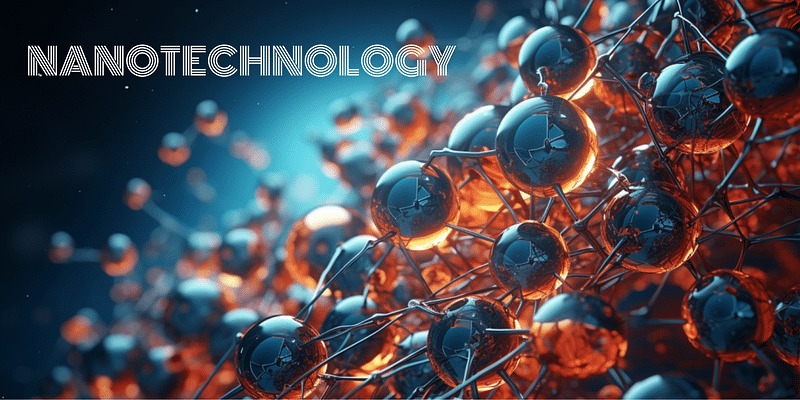Industrial packaging bags are the unsung heroes of global supply chains. They protect everything from raw materials to finished products, ensuring safe and efficient transportation. However, traditional materials often face limitations in strength, durability, and barrier properties. Enter nanotechnology, a field that manipulates matter at the atomic and molecular level, offering groundbreaking solutions to enhance the performance of industrial bags. This blog post explores the profound impact of nanotechnology on industrial bag strength and durability, revealing how it’s transforming the packaging landscape.
Understanding the Challenges of Traditional Industrial Bags
Before diving into the nanotechnology revolution, it’s crucial to understand the limitations of conventional industrial bags. Traditional materials like polyethylene, polypropylene, and paper, while cost-effective, can be susceptible to tears, punctures, and degradation from environmental factors like moisture and UV radiation. This vulnerability can lead to product loss, spoilage, and increased transportation costs. Moreover, the growing demand for sustainable packaging solutions necessitates materials with enhanced properties and reduced environmental impact.
The Promise of Nanomaterials
Nanomaterials, with their unique properties stemming from their nanoscale dimensions, offer a compelling solution to these challenges. By incorporating nanomaterials into industrial bag formulations, manufacturers can significantly improve strength, durability, barrier properties, and even add functionalities like antimicrobial resistance.
Nanotechnology’s Contribution to Enhanced Strength
One of the most significant impacts of nanotechnology is the ability to enhance the mechanical strength of industrial bags. Nanomaterials like carbon nanotubes (CNTs) and nanoclay can act as reinforcing agents, creating a network that distributes stress more evenly across the material.
Carbon Nanotubes: The Ultimate Reinforcement
CNTs, known for their exceptional tensile strength and stiffness, are being integrated into polymer matrices to create nanocomposites with superior mechanical properties. Even small amounts of CNTs can dramatically increase the tear resistance and puncture strength of industrial bags, making them ideal for packaging heavy and abrasive materials.

Nanoclay: Adding Layers of Protection
Nanoclay, another promising nanomaterial, forms layered structures that enhance the barrier properties and mechanical strength of polymer films. By creating a tortuous path for gases and liquids, nanoclay reduces permeability and improves resistance to moisture and chemicals. Furthermore, nanoclay can increase the stiffness and tensile strength of industrial bags, providing added protection against physical damage.
Nanotechnology’s Role in Improving Durability
Durability is another critical factor in industrial packaging, especially for long-term storage and transportation. Nanomaterials can significantly extend the lifespan of industrial bags by enhancing their resistance to environmental degradation.
UV Protection with Nanoparticles
Ultraviolet (UV) radiation can degrade polymers, leading to embrittlement and cracking. Nanoparticles like titanium dioxide (TiO2) and zinc oxide (ZnO) can act as UV absorbers, protecting the polymer matrix from harmful UV rays. By incorporating these nanoparticles into industrial bag formulations, manufacturers can significantly improve UV resistance and extend the service life of the bags.
Enhanced Barrier Properties for Chemical Resistance
Industrial bags often come into contact with corrosive chemicals, which can degrade traditional packaging materials. Nanomaterials can create effective barriers against chemical permeation, protecting the contents and extending the durability of the bags. By creating a dense and impermeable layer, nanomaterials prevent chemicals from penetrating the bag material, ensuring long-term protection.
Beyond Strength and Durability: Functionalized Nanomaterials
Nanotechnology extends beyond simply enhancing strength and durability. Functionalized nanomaterials offer the ability to add specific functionalities to industrial bags, catering to specialized applications.
Antimicrobial Nanoparticles for Food and Pharmaceutical Packaging
In the food and pharmaceutical industries, maintaining hygiene and preventing contamination is paramount. Nanoparticles like silver and copper have antimicrobial properties, inhibiting the growth of bacteria and fungi. By incorporating these nanoparticles into industrial bags, manufacturers can create packaging solutions that extend shelf life and ensure product safety.
Smart Packaging with Nanotechnology
The integration of sensors and trackers into industrial bags is revolutionizing supply chain management. Nanomaterials can be used to create conductive inks and coatings, enabling the development of smart packaging solutions. These solutions can monitor temperature, humidity, and other environmental factors, providing real-time data on product conditions.
The Future of Nanotechnology in Industrial Bags
As nanotechnology continues to advance, its impact on industrial packaging will only grow. Researchers are exploring new nanomaterials and fabrication techniques to further enhance strength, durability, and functionality. The development of sustainable nanomaterials and biodegradable nanocomposites will also play a crucial role in reducing the environmental footprint of industrial packaging.
Addressing Challenges and Ensuring Safety
While nanotechnology offers immense potential, it’s essential to address potential challenges and ensure safety. Regulatory frameworks and standardized testing methods are crucial to assess the environmental and health impacts of nanomaterials. Ongoing research is focused on developing safe and sustainable nanomaterials that minimize risks and maximize benefits.
Embracing Innovation for a Sustainable Future
The integration of nanotechnology into industrial bag manufacturing represents a paradigm shift in packaging technology. By embracing innovation and investing in research and development, manufacturers can create high-performance, sustainable packaging solutions that meet the evolving needs of global industries. The invisible fortress created by nanotechnology is not just about strength and durability; it’s about building a more efficient, safe, and sustainable future for industrial packaging.
